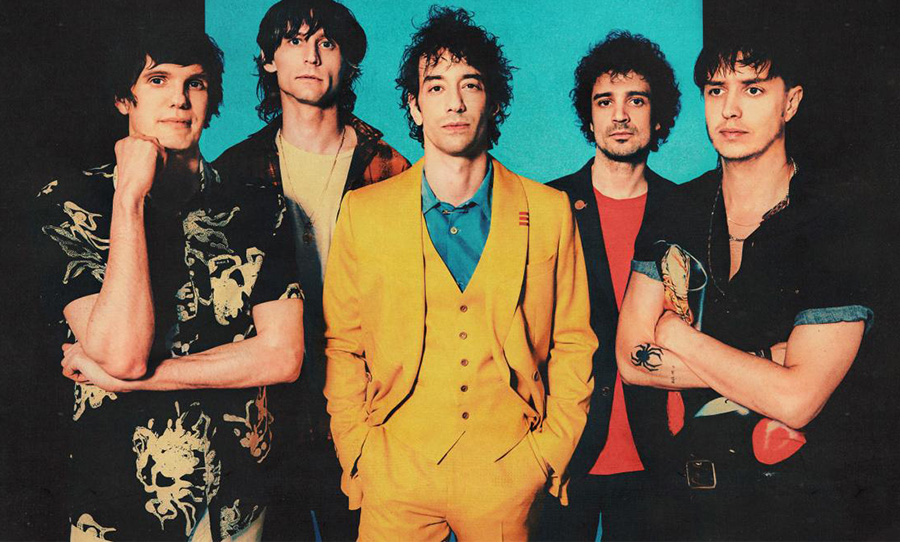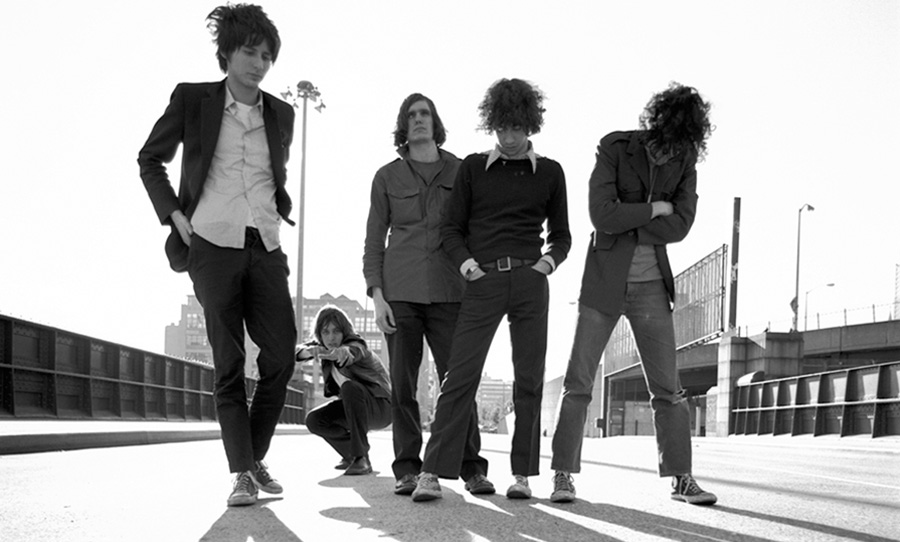In 2001, The Strokes released Is This It and changed the paradigm of rock ‘n’ roll forever. Here’s what went into crafting the raw, visceral sound of one of the best rock albums of all time.
At the turn of the new millennium, the climate of the music charts was rather erratic. Nu-metal was solidifying itself, with Limp Bizkit, Linkin Park and Papa Roach climbing up the charts; gangster rap was making commercial ground; while conversely, boy-bands like N*Sync and Backstreet Boys were selling out arenas and making millions of teenage girls squeal profusely. Hardly the ideal climate for an album like Is This It.
By all accounts it’s seemed as though garage rock was dead, being slowly substituted for turntables, programmed beats and sugary pop. But one five-piece band sought to change this.
In early 2001, The Strokes released their debut EP, The Modern Age, to a rapturous response. Though barely ten minutes long, the three track extended play caused shockwaves in the music scene, catapulting the band into the music press machine and ultimately piquing the interests of record executives a plethora of label giants.
What followed next was the largest bidding war in recent years for a rock band. Finally, after weeks of speculation and a sold-out UK tour, The Strokes signed to RCA in March 2001. Now began the mammoth task for the five-piece: writing and recording a debut album that could live up to the hype of their debut.
Initial sessions for the album began immediately after signing with RCA, opting to work with producer Gil Norton, who’d previously worked for The Pixies and Foo Fighters. Though the two parties got along well, the sessions with Norton were scrapped as they were deemed “too pretentious” and “too clean” by the band.
As a result, The Strokes chose to work with Gordon Raphael – who worked with the band on The Modern Age – at the Transporterraum in Manhattan. Though the studio was basically a poorly lit basement, it was there that for six weeks, the NYC band wrote and recorded the best rock album of the 2000’s, and one of the most revered of all time.

A road-worn vision
As recording sessions began, singer and primary songwriter Julian Casablancas detailed his unusual goal for their debut LP. Casablancas wanted the album to sound like “a band from the past that took a time trip into the future to make their record”. He wanted the album to sound aged and worn, yet still set itself apart from their modern contemporaries.
The overall approach for Raphael was to make the album as authentic as possible. The band wanted Is This It to sound like a band playing live, and in stark contrast to other acts at the time, they wanted to make the album with few overdubs and minimal use of studio effects.
To intill this vision of grittiness and tenacity, the band spending days practicing the same song over and over until they got a live take with every band member sounding impeccable. Casablancas favoured “raw efficiency”, and as such, most songs were recorded in one take, with Raphael improvising as he went along, going off the band members’ facial expressions for cues.
In an interview with Sound On Sound, Raphael said of the production process: “They couldn’t tell me that they wanted the voice brighter and it wasn’t making them happy. They would just have big frowns on their faces and I would start turning the knobs on every piece of equipment until the frowns began turning into smiles. That was the technique for working with The Strokes.”
Elementary drum treatment
Taking cues from their heroes The Velvet Underground and opting for a decidedly ‘punk’ approach, the process for recording the drums was rather simple. The miking set-up consisted of only three microphones: one for the bass drum, one placed above the kit and the final mic nestled in the corner of the studio.
This set up was done by Raphael to craft an explosive and volatile drum kit, and at the behest of drummer Fab Moretti, Raphael kept the rumbles of the guitars and bass picked up by the drum mics in the final product.
In contrast to the live sound the band was going for, some tracks were specifically designed, upon the band’s request, to sound as though a drum machine was used, even though none were present during the recording. This is most evident in Hard To Explain, where Raphael employed his experience in industrial music production, and a heavy helping of dynamic range compression, to sculpt the acoustic drum kit into creating a near-mechanical sound – or as he put it: “destroying sounds – taking sounds, disintegrating them and bringing them back.”
Squalling guitars and transparent bass
Guitarists Nick Valensi and Albert Hammond Jr. both used one guitar to record their parts, Hammond opting for a 1985 olympic white 72′ reissue Stratocaster. Valensi on the other hand, used an Epiphone Riviera customised with Gibson P-94’s.
The recording process for the guitars was relatively straight-forward: both guitarists utilised Jekyll and Hyde Ultimate Overdrive and Distortion pedals to achieve their squalling sounds. Both used Fender DeVille’s placed on opposite ends of the studio, while Raphael placed a single mic on each one. The signals were then fed directly into a preamp with no EQ after.
The bass guitar was recorded in much the same process with a single-mic setup fed directly into a preamp with zero EQ. Bassist Nikolai Fraiture used Fender Standard Jazz Bass, making use of no additional stompboxes. The Jazz Bass’ inherent brightness and dual pick-ups worked to Fraiture’s advantage, pushing bass out of the background and making it the focal point of many tracks, such as the titular album opener.
At the core of The Strokes’ sound is the way the guitars and bass work together, tracing back to Casablancas’ formal training in classical music. Rather than both guitars playing the same chords while the bass plays the root note, most of the tracks on the album feature interlocking guitar and bass parts.
From the rockabilly swing of Someday, to the staccato, reggae vibes on Last Nite, it was the complementary guitars and bass that would become the staple of the album’s tone and legacy.
Boxy vocals and insightful imagery
For vocals, Casablancas sometimes to sang through a Audio-Technica 4033 either into a small Peavey practice amp, or an Avalon 737 tube preamp and compressor, recorded with a Neumann TLM103 (or u47), for the majority of the album, imparting a warm, distorted, lo-fi quality that defines the album.
Conversely, while not directly attributing to a specific sonic quality of Is This It, it’s hard to imagine the album without Casablancas’s insightful lyricism. He took the listener on a journey through life in New York City as a twenty-something, inflating theme themes of love, sexual exploration and heartbreak.
From lying to get into a girl’s apartment in the opening track, to experimenting with drugs to fit in with the crowd on Soma, to the melancholic and heartache on Trying Your Luck, The Strokes crafted eleven relatable and infectious songs that had a massive influence on the music scene that followed.
Dozens of bands, from The Hives, The Libertines, Arctic Monkeys and Franz Ferdinand were all heavily influenced by Is This It. What followed was revival of garage rock, a new found interest in indie rock, and hundreds of new guitar-based bands trying to capture the lightning in a bottle that no-one, not even The Strokes themselves, could ever replicate.



